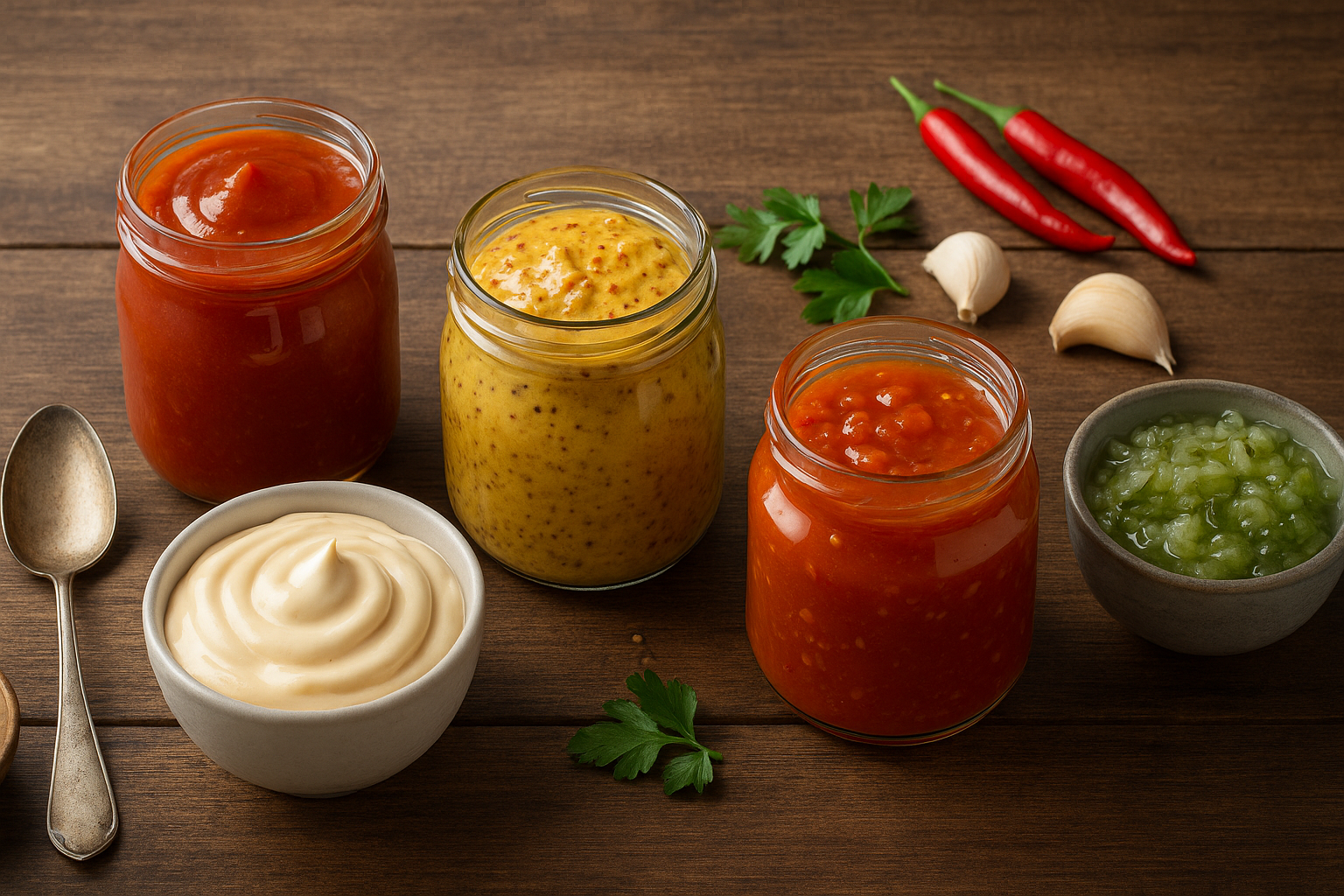Condiments are often an afterthought in home cooking, yet they hold the power to elevate meals from ordinary to exceptional. Whether drizzled, spread, or dipped, a well-made condiment enhances flavor, adds moisture, and balances dishes with acidity, sweetness, or heat. While store-bought options offer convenience, many contain excess sugars, preservatives, and artificial flavors that can dull the culinary experience.

Making your own condiments at home allows for greater control over ingredients and flavor profiles. It also brings a sense of craftsmanship to cooking. This guide explores essential condiments that can be prepared in your kitchen with accessible ingredients and minimal effort. These homemade versions often surpass their commercial counterparts in taste, quality, and versatility.
Why Make Condiments at Home
Homemade condiments offer several advantages. They are fresher, often healthier, and customizable to individual preferences. If you prefer your mustard with more tang or your mayo with less oil, you can adjust the ingredients accordingly. Many recipes can be prepared in small batches, reducing waste and ensuring the product remains flavorful over time.
Moreover, the process of preparing condiments can be rewarding. It encourages mindful cooking and deepens appreciation for flavor development. In times when pantry planning has become more important, learning to create staple condiments aligns with strategies for maintaining a resilient and functional kitchen. For insights into pantry essentials and home preparedness, consider exploring this guide on stocking pantry goods.
Essential Homemade Condiments
Mayonnaise
Mayonnaise is an emulsion of egg yolk, oil, and acid. When made at home, it has a light, fresh flavor that is far superior to most store-bought versions.
Ingredients:
- 1 egg yolk
- 1 teaspoon Dijon mustard
- 1 tablespoon vinegar or lemon juice
- 1 cup neutral oil (such as grapeseed or sunflower)
- Salt to taste
Combine the egg yolk, mustard, and acid in a bowl. Slowly whisk in the oil until the mixture thickens and emulsifies. Season to taste and store in the refrigerator for up to one week.
Ketchup
Homemade ketchup is less sugary and has a deeper tomato flavor than the commercial kind.
Ingredients:
- 1 can of tomato paste
- 2 tablespoons vinegar
- 1 tablespoon honey or maple syrup
- 1 teaspoon garlic powder
- 1 teaspoon onion powder
- Salt and water to adjust consistency
Combine all ingredients in a saucepan and simmer for ten minutes. Adjust sweetness and acidity as needed. This recipe complements a wide range of dishes, including sandwiches and Big Mac-inspired wraps.
Mustard
Mustard is one of the easiest condiments to personalize. It begins with mustard seeds or powder and can be flavored with wine, vinegar, or herbs.
Ingredients:
- 3 tablespoons mustard seeds (yellow, brown, or a mix)
- 1/2 cup vinegar
- 1/4 cup water
- 1 teaspoon salt
Soak the mustard seeds in vinegar and water overnight. Blend until desired texture is reached. For a smoother mustard, use ground mustard instead of whole seeds.
Hot Sauce
Homemade hot sauce allows you to control the level of heat and acidity. It can be made with fresh or fermented chili peppers.
Ingredients:
- 1 cup chopped hot peppers
- 1/2 cup vinegar
- 2 cloves garlic
- Salt to taste
Blend the ingredients until smooth, then simmer gently for five minutes. For those interested in exploring the world of fermentation, this condiment can also be aged using natural fermentation methods. For more on the benefits and techniques of fermented foods, visit this article on homemade fermentation.
Relish
Sweet or savory, relish adds brightness to grilled and roasted foods. It is a practical way to use up excess cucumbers, onions, or peppers.
Ingredients:
- 2 cups diced cucumbers or other vegetables
- 1/4 cup vinegar
- 2 tablespoons sugar
- 1 teaspoon salt
Mix all ingredients and let sit for at least one hour. For a cooked version, simmer the mixture for ten minutes before storing in jars.
Tips for Safe and Flavorful Preparation
Use fresh, high-quality ingredients. Always sanitize storage containers to avoid spoilage. Label each condiment with the date of preparation and use within recommended timeframes. Refrigeration extends shelf life and preserves flavor.
Many condiments also benefit from a resting period. Allowing sauces or spreads to sit for a few hours enables the flavors to meld and deepen.
Incorporating Condiments into Everyday Meals
These condiments are more than sandwich fillers. Use homemade ketchup in marinades, incorporate mustard into salad dressings, or blend mayonnaise with herbs for a quick dip. Having versatile condiments on hand streamlines meal preparation and encourages experimentation. If mornings are particularly hectic, these healthy breakfast tips may help you integrate flavorful spreads without adding complexity to your routine.
The Broader Benefits of DIY Kitchen Projects
Learning to make condiments is part of a broader movement toward self-sufficiency and mindful consumption. Just as creating your own natural hand sanitizer can offer peace of mind, making your own sauces, spreads, and dressings can provide confidence and satisfaction.
Homemade condiments are typically free of additives, aligned with dietary goals, and tailored to personal tastes. They reflect a thoughtful approach to eating and cooking.
Frequently Asked Questions
How long do homemade condiments last?
Most should be refrigerated and used within one to two weeks. Always check for signs of spoilage and label with the date prepared.
Can these condiments be preserved for longer storage?
Yes, with proper canning methods. Use sterile jars and follow tested guidelines for food safety.
Are there vegan alternatives for mayo?
Yes, vegan mayo can be made using aquafaba (chickpea water) in place of egg yolk.
Conclusion
Homemade condiments add personality, flavor, and freshness to any dish. They are practical, cost-effective, and endlessly adaptable. By learning a few simple techniques and keeping essential ingredients on hand, anyone can enhance their culinary repertoire with sauces and spreads that reflect care and creativity.
Leave a Reply